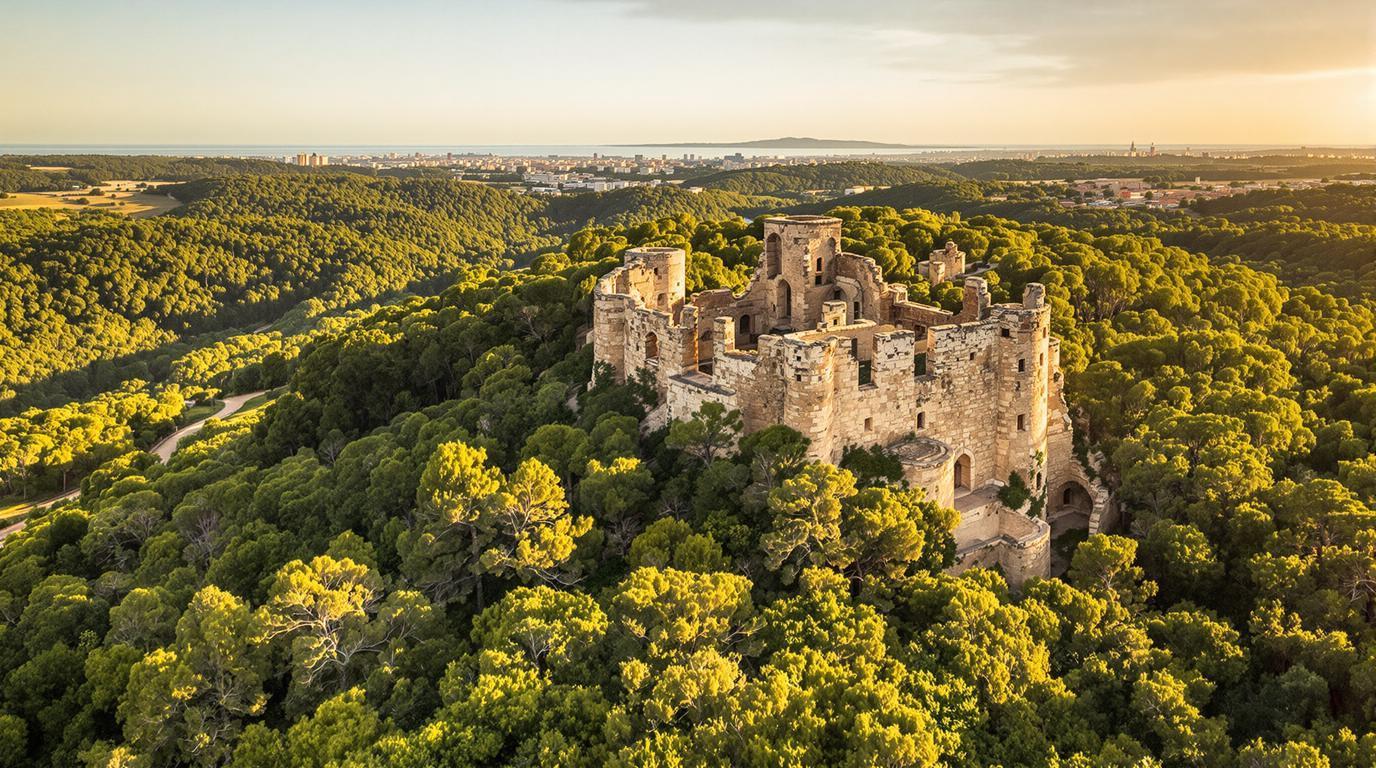Barcelona draws millions each year to its sun-soaked plazas and Gaudí masterpieces, but just 30 minutes southwest lies a treasure most tourists never discover. Molins de Rei, a charming Catalan town of 25,000 residents, offers a perfect blend of natural splendor and cultural authenticity without the crowds. This forest-embraced community nestled between the Llobregat River and Collserola mountains provides a refreshing alternative to Barcelona’s urban intensity.
A town where forests rule the landscape
What immediately strikes visitors about Molins de Rei is its remarkable natural setting – an impressive 65% of the municipal area remains forested. These extensive woodlands provide miles of hiking trails connecting ancient hermitages and medieval ruins, offering spectacular views of the surrounding countryside and distant Barcelona skyline.
“Our forests are our greatest treasure,” explains Joan Castellví, a local historian. “For generations, they’ve provided not just resources but a spiritual connection to the land that defines our community’s character.”
The castle ruins with panoramic views
Perched dramatically above the town, Castell Ciuró’s weathered stone walls tell stories dating back to the 10th century. This ancient fortress rewards hikers with breathtaking panoramas across the Llobregat Valley. Visit at sunset when the golden Mediterranean light bathes the ruins and distant Barcelona in a warm glow that photographers dream about.
Nearby, the Sant Pere Romaní Hermitage emerges from the forest like something from a fairy tale – a small stone chapel with barrel-vaulted ceilings surrounded by whispering pines and wild herbs.
A festival that’s survived 170 years (and counting)
Each February, Molins de Rei transforms during the Fira de la Candelera, a celebration recognized as a festival of National Interest. What began in 1851 as an agricultural fair has evolved into a vibrant cultural showcase featuring traditional Catalan performances, artisanal markets, and community revelry.
“The Fira connects us to our ancestors while creating new memories,” says Maria Puig, a lifelong resident. “It’s when our town truly comes alive – the streets fill with music, the smell of traditional foods, and people celebrating together.”
Architectural gems hiding in plain sight
Walking Molins de Rei’s streets reveals architectural treasures spanning centuries. Ca n’Ametller stands out with its striking geometric sgraffito decorations, while the Federació Obrera building showcases early 20th-century design with ceramic tiles and Art Nouveau flourishes. The Palau de Requesens offers another glimpse into the town’s aristocratic past.
Unlike other Spanish villages that draw art enthusiasts, Molins de Rei’s appeal lies in its authentic, lived-in character rather than tourist polish.
Mediterranean flavors without Barcelona prices
Local eateries like Entreplats and PaladART serve Mediterranean and Spanish cuisine that rivals Barcelona’s best restaurants at significantly lower prices. The town’s Municipal Market offers a sensory feast of regional specialties – from fresh seafood to local cheeses and olive oils produced in nearby groves.
After exploring Molins de Rei, consider venturing to healing waters just across the French border or discovering uncrowded Greek islands that rival Santorini.
The perfect Barcelona day trip
Reaching Molins de Rei couldn’t be easier – the R4 train from Barcelona’s Plaça de Catalunya delivers you to the town center in just 31 minutes for about €3. This accessibility makes it perfect for travelers seeking a brief escape from Barcelona’s intensity without sacrificing a full day of exploration.
Whether you’re drawn by forest trails reminiscent of Oregon’s rugged coastline or seeking cultural experiences comparable to Cape Town’s vibrant scenes, Molins de Rei delivers authentic Catalan charm without overwhelming crowds.
As evening approaches and Barcelona’s tourist hordes surge toward tapas bars, Molins de Rei offers something increasingly rare – a chance to experience Catalonia as locals do, where conversations flow naturally and traditions remain alive not for visitors, but for the community that cherishes them.
